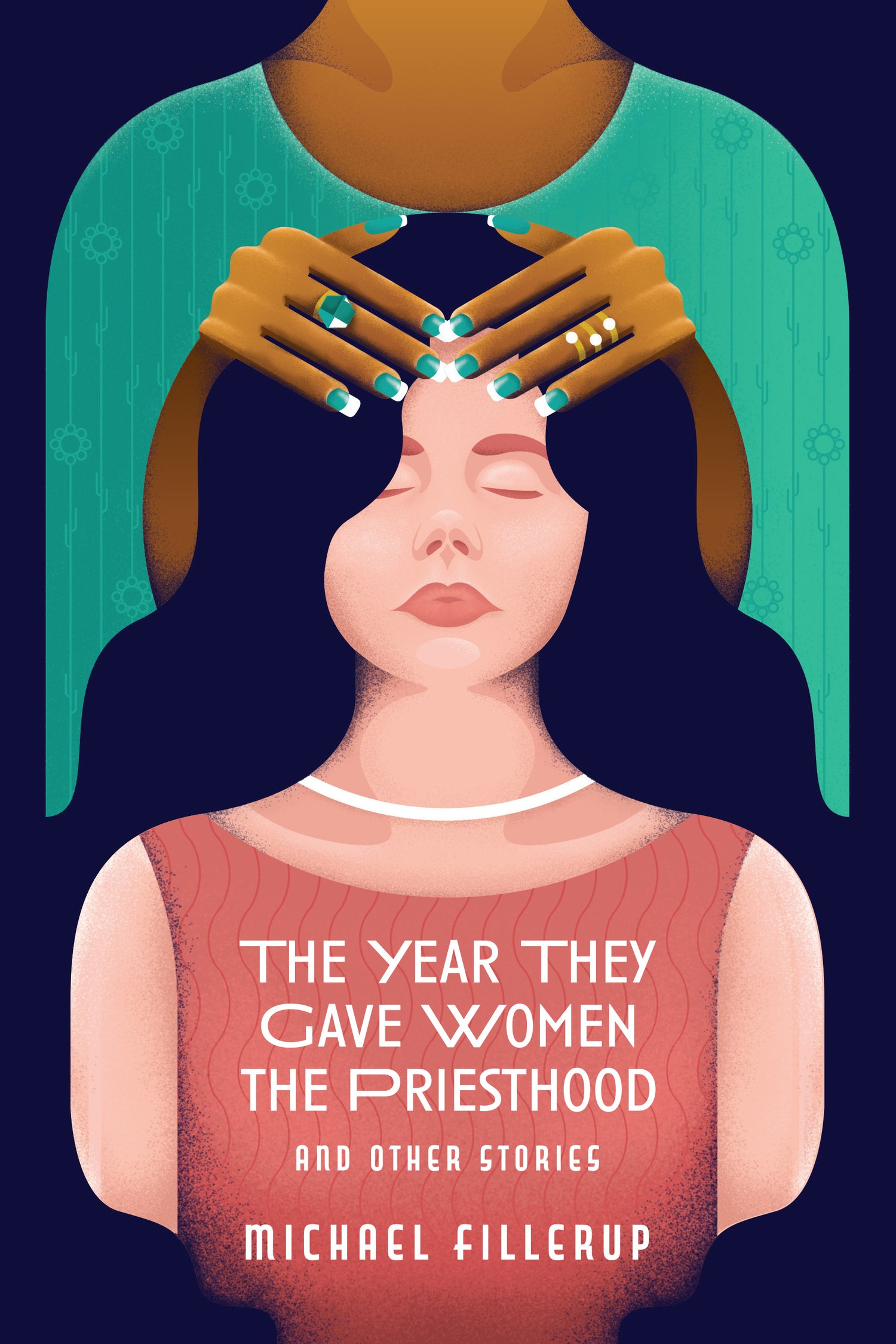
Review
Title: The Year They Gave Women the Priesthood (and Other Stories)
Author: Michael Fillerup
Publisher: Signature Books
Genre: Short Story Collection
Year Published: 2022
Number of Pages: 274
Binding: Paper
ISBN: 9781560854456 (paperback), 9781560854166 (ebook)
Price: $16.95
Reviewed for the Association for Mormon Letters by Julie J. Nichols
Michael Fillerup’s writing is generous. He gives you lots of words, in the service of building full, round worlds and fully round sets of characters. No minimalism for Michael. In his magnanimous acknowledgments he thanks Elouise Bell and Lavina Fielding Anderson for their editorial “paring and repairing,” implying that verbal largesse is inherent, instinctive, and inbred in the author of this collection of rich, thought-provoking stories.
Many of the stories in The Year They Gave Women the Priesthood (and Other Stories) have been previously published, from 1991 to 2021. It’s interesting to me that some of them buy into cliché just to subvert it, while others don’t; some are a little bit predictable, while others aren’t. This is good, satisfying Mormon fiction for those of us who like literarity and provocativity. (I know those aren’t real words. I’m just trying to compete with Fillerup.) Like I said: no minimalism for Michael; also, no fantasy for Fillerup, no sci-fi, no messing with our Mormon brains. “I don’t pull punches…and I don’t sprinkle fairy dust,” he says on his website. Just good “what-if” stories about good “what-if” families in contemporary Mormon milieux, making contemporary Mormon mistakes.
Except maybe the first, eponymous story. “The Year They Gave Women the Priesthood” is just about the best title ever, isn’t it? I have one complaint about this “what-if” future-perfect story, though. It’s told from the point of view of a male, and the premise is that the priesthood is taken from men and given to women, across the board. Unlike Elouise Bell’s “The Meeting” (Dialogue 1981), a tongue-in-cheek reversal of male-and-female roles in a typical sacrament meeting, in Fillerup’s scenario both men and women know exactly what’s happened to them; it’s announced by the prophet over the General Conference pulpit. The women are jubilant. The men are morose. What’s thought-provoking—not funny as in “The Meeting”—is the sadness the men feel at having lost their priesthood rights and powers.
My complaint is this: I don’t know about every feminist Mormon woman, but I don’t want the priesthood just for women. In my world, everyone can have it who wants it. (I’m actually sure that’s true anyway—the problem is with the ways it’s acknowledged or not, just as Mother in Heaven exists for all who seek her whether she’s acknowledged from the COB or not.) So, for me, this story was not a cause for jubilation but a provoker of sorrow and longing. We all long for power to connect with each other through God, or with God through each other. All of us. Telling anyone who wants it that they just can’t have it, “because I said so,” is—well—IMHO—inaccurate, untrue, unrighteous. The year they gave women the priesthood was not such a triumph after all. And that’s Fillerup’s point.
“The Year…” is the longest story in the collection. There are fifteen others, so this book will keep you (or the lucky person you gift with it) occupied for several before-you-fall-asleep evenings. I read some of the shorter ones first—“Selfie,” a prose poem of terrible implication; “Senior Girls Softball,” whose last line punches you in the gut with its truth; “Missionary Farewell,” very sweet: bittersweet.
Less short but very likable: “Ghosts,” where a home teacher really does his job, I mean really does the ministering they keep urging us to perform. (It was first published in 1997, but it’s incredibly current.) Probably my favorite story is “In a Better Country,” in which a man who has lost his son on a mission sets out on a mission of his own and meets himself—and his son, and Christ—in many guises. It was first published in 2009. It’s full of unexpected twists that wring the heart.
A few others disappointed me a little because they tugged at the heart in more predictable (i.e., dare I say it, Deseret Book) ways, stories of pioneer treks and secrets kept back and other secrets divulged to sorrowful ends. But in general, the entire volume rewards the eager reader of fiction: these are excellent stories, finely crafted, their words well-chosen for moving us beyond our regular lives into how-it-might-be-if-we-let-it, where-we-might-be-if-only-we-had-our-eyes-open-to-see-it. How our neighbors are if we let ourselves care. How it is to be a bishop, how it is to be an adulterer, how it is to be a man or woman who’s suffered loss and wishes to feel differently.
According to his website, Fillerup has written “numerous prize-winning short stories, a short story collection Visions, and Other Stories, two novels (Beyond the River and Go in Beauty), several children’s books, and mounds of obscure, unpublished, illegible drafts.” Many of the stories in The Year They Gave Women the Priesthood are among those prize-winning shorts. He’s a national treasure if our nation is literary Mormondom. I hope we see many more of his words soon.
